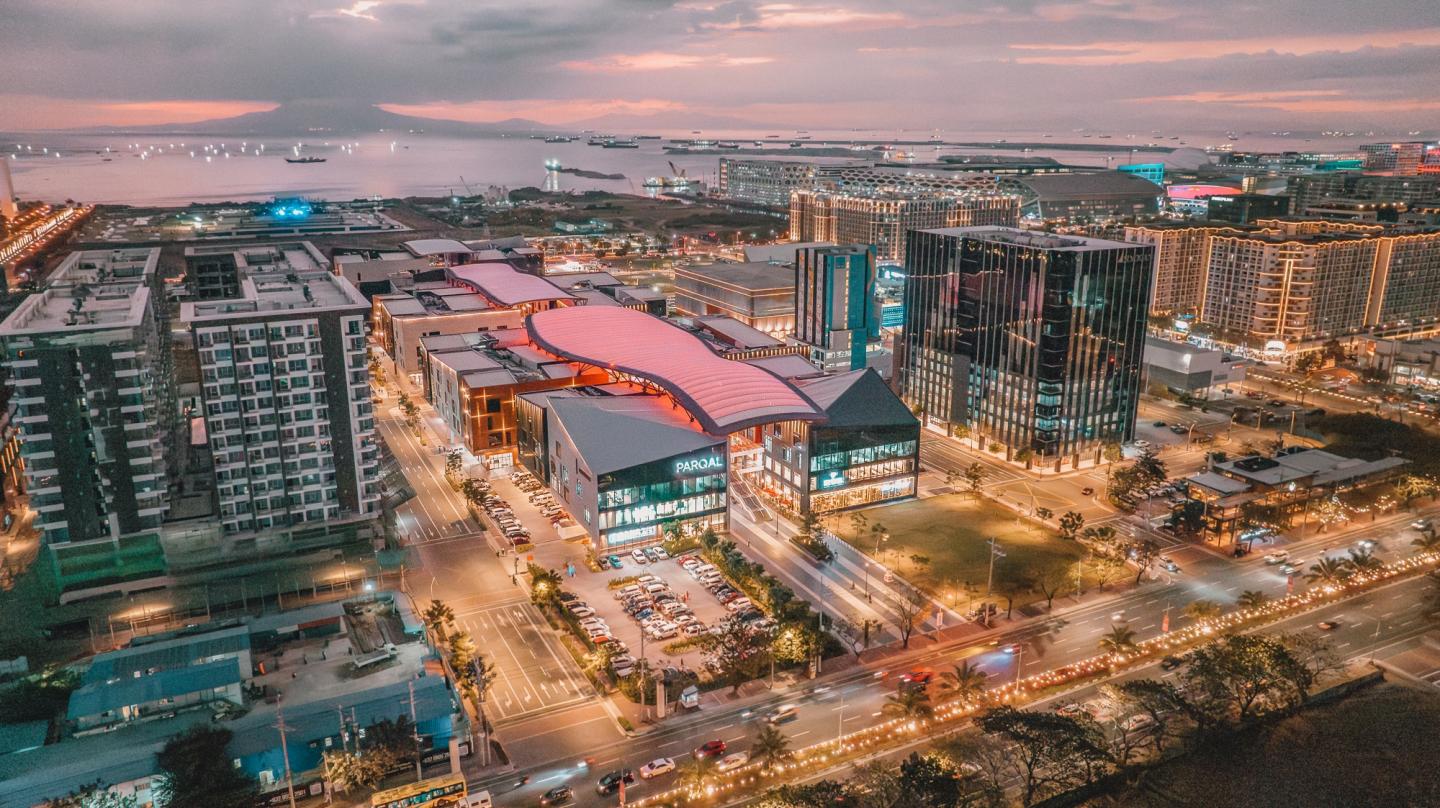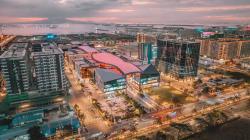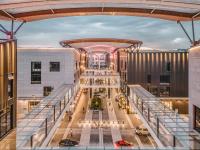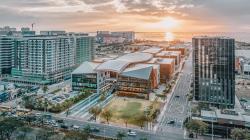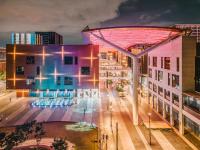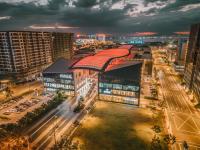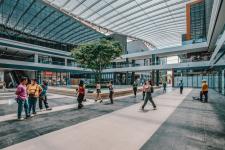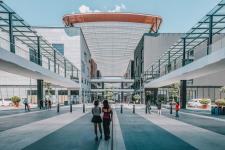Parqal is a mixed-use development located in Manila, Philippines, and is Aseana City’s flagship project in the district and the first naturally-ventilated development of its kind in Manila.
Situated in the heart of the Aseana City development, Parqal is surrounded by diverse land use. The site provides excellent accessibility through primary and secondary roads, with Macapagal Boulevard passing through the 2 main blocks of the development for greater convenience and visibility. The site is also well-connected by local transport and the future LRT Aseana - Redemptorist Station as part of the Line 1 Southern Extension.
The masterplan for Parqal provides quality public spaces integrated with Retail and F&B, creating vital and attractive gathering areas for the city. The five-hectare walkable development is designed to offer an array of leisure activities and office spaces, highlighting lifestyle and retail shops offering amenities from dining, fashion, and wellness to DIY options across the 650 m retail strip.
The extended length of the plot posed a challenge to the place-making strategy for the Plazas, Retail Zones, and F&B Zones to maintain and enhance connectivity with its surrounding urban fabric.
Open Space and Parkland design is a defining concept for Parqal to unify and connect the development, including functions like an Amphitheatre, Courtyard, and Greenway. The integrated open space provides a range of leisure, dining, retail, and creative working experiences for visitors with a contemporary and distinctive landscape design which enhances the overall place-making approach of the development. Elevated walkways create a more collaborative and connective space for businesses that occupy the higher floors. The central promenade that runs through the heart of the development is flanked by shops making up the 650 m retail street. Four main plazas of varying civic uses and sizes are placed within 5-minute walks from one another to shorten the walks and encourage exploration of the space.
To enhance the connectivity of the development, buildings are divided into smaller blocks akin to village clusters, creating more streets and increasing porosity in and out of Parqal. The central park also forms the main pedestrian crossing when intersected by traffic roads. Integrating Parqal into the surrounding environment, elevated walkways branch out from the heart of the park to create direct connections to neighbouring developments. Double frontage is also created by setting back buildings, creating plazas of a more intimate scale across the length of the site.
Standalone flagship stores are also strategically placed along major road intersections to attract and invite passers-by to the development. The development is finished with a canopy that hovers over the length of Parqal to protect visitors from the sun and rain.
The project’s architectural expression was developed based on a modernised approach to the concept of ‘Bahay na Bato’ - a Philippine traditional architectural typology, developed in a perfect symbiosis of Spanish Vernacular and Traditional Chinese styles. Buildings feature a pitched roof, subtle excavations to create gathering spaces, and a layered façade that uses different materials – to provide buildings with a strong volumetric profile.
Applying these principles to Parqal, the façade of the buildings feature ‘excavated’ segments of the buildings finished with full-height glazing, allowing for visual permeability and natural light to fill the interior spaces. The excavations also carve out important civic spaces in the form of plazas, arcades, and terraces. The roofs are also angled in varying degrees to mimic the pitched roofs of Bahay na Bato.
The façade of the buildings features 3 main finishes in the form of Corrugated Aluminium Cladding, Fibre Cement Board Cladding, and Timber Cladding. The finishes are used in alternating sections on the façade to break visual uniformity.
The entire length of the development is enveloped by a "floating canopy" that serves as the flagship spine of Aseana City's sidewalk masterplan. The lightweight canopy takes an undulating and organic form that protects the retail environment from the rain while also allowing for natural ventilation. The use of ETFE, which is permeable to sunlight and UV rays, creates the opportunity to have extensive green areas with trees of substantial size. The flexibility of the ETFE foil also makes it able to withstand high tension in regions like Manila with high seismic activity.
The building massing clusters allow for natural cross-ventilation through open canopies and laneways between buildings while the landscaped areas provide a passive cooling system and sun shading. A rainwater harvesting system is introduced which can recirculate rainwater for landscape irrigation, water features, and toilet flushing. The façade design incorporates a mix of solid elements and monolithic & tempered glass to allow for natural light while regulating internal temperatures to promote energy efficiency.
Parqal is an impressive showcase of modern architecture that draws inspiration from traditional Filipino architecture and utilises locally sourced materials, creating a visually stunning environment that is functional and sustainable. The development is an icon in the Aseana City masterplan and an important civic hub for years to come.
2017
2023
GFA: 80,000 sq m
Design Architect: Aedas
